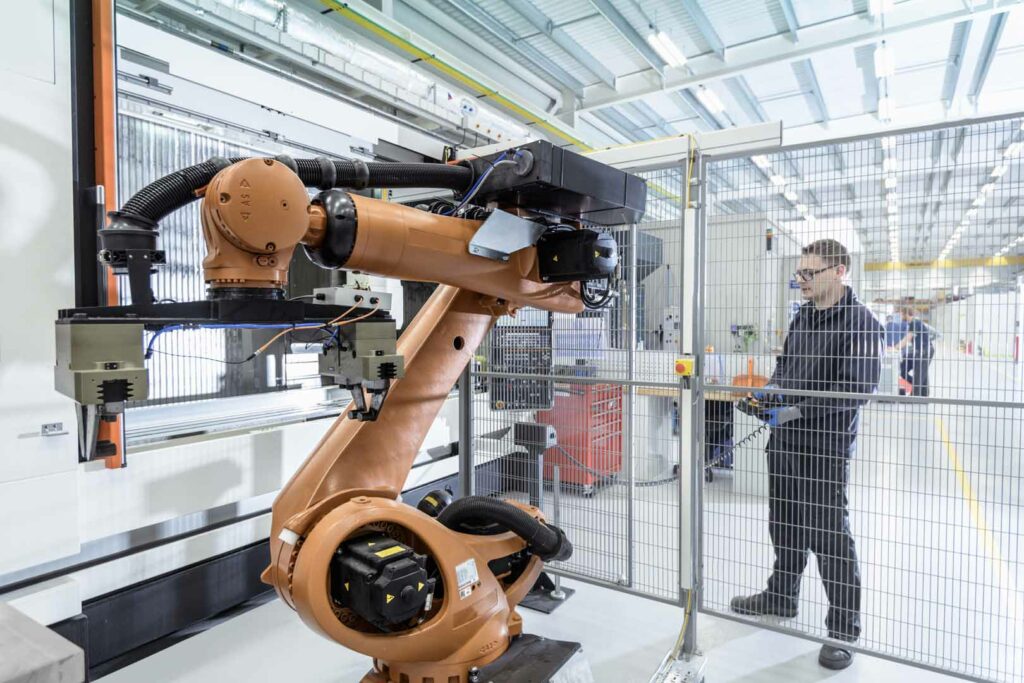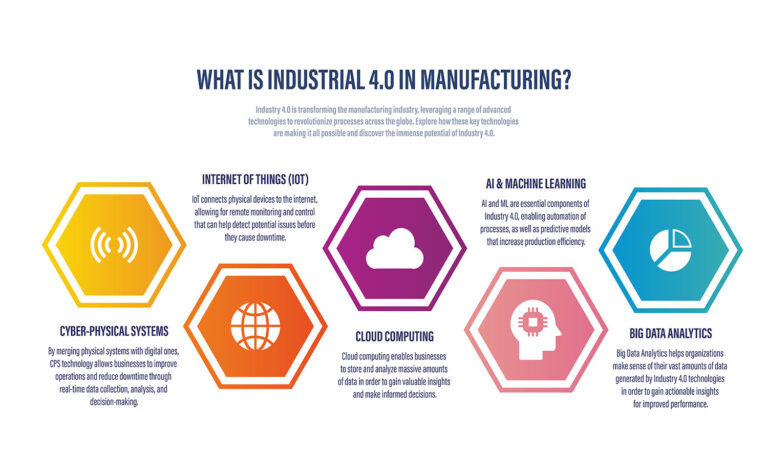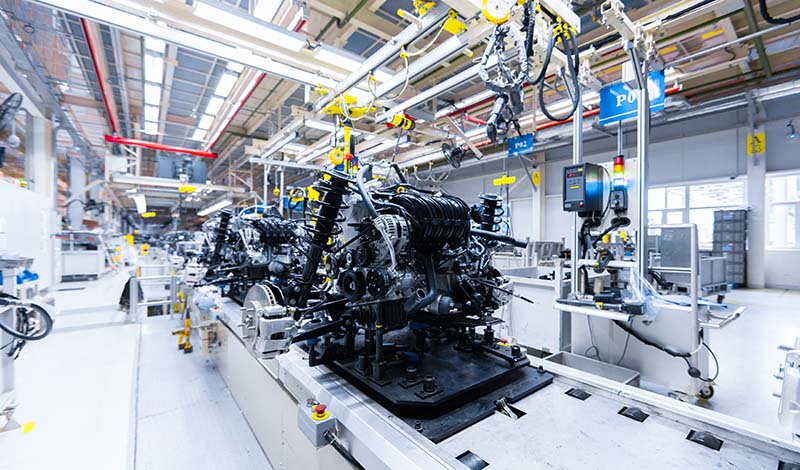
Collaborative robots, or cobots, are a type of industrial robot designed to work alongside human operators. They enhance productivity and safety in manufacturing processes. Unlike traditional robots designed to work autonomously, cobots work close to humans. They perform physically demanding, dangerous, or repetitive tasks that would otherwise be difficult for humans to perform.
Cobots typically feature advanced sensors and safety features. These features allow them to work in close proximity to humans without posing a safety risk. They are also designed to be highly flexible, and adaptable to various manufacturing processes.
Plus, they are easy to program and reprogram. This makes them an ideal solution for manufacturers looking to improve efficiency, safety, and productivity.
An operator controls them through a user-friendly interface, which allows them to program the robot to perform specific tasks. Cobots may also be equipped with sensors to detect and respond to environmental changes.
These changes include the presence of humans or other objects in their workspace. This enables them to work safely alongside humans and even collaborate with them on certain tasks, such as assembly or packaging.
The automotive industry has been one of the early adopters of cobots. Automotive industry automation uses cobots in various applications, from welding and painting to assembly and inspection. In automotive production, cobots often perform repetitive, physically demanding tasks or require high precision. These tasks include applying sealants, installing components, and handling heavy parts.

1
Cobots work alongside human operators, creating a more collaborative and efficient production process. They can also be easily reprogrammed to adapt to changes in production demands. This makes them ideal for automotive manufacturers that must produce a wide range of vehicle models and variations.
2
They can significantly increase the productivity of automotive manufacturing processes. This is done by automating repetitive or physically demanding tasks that would otherwise require human labor. This speeds up production and reduces the risk of human error. This results in higher throughput, more consistent output, and a wide range of vehicle models and variations.
3
Cobots can be programmed to perform precise tasks, such as welding or painting. They can do these tasks with greater accuracy and consistency than a human operator could achieve. This can result in higher-quality finished products, leading to fewer defects, reduced scrap rates, and higher customer satisfaction.
4
They can improve safety in the automotive industry by reducing the risk of accidents or injuries. These accidents are often caused by heavy lifting, repetitive motion, or exposure to hazardous materials. Cobots are designed to work alongside human operators without posing a safety risk.
They can be equipped with sensors that detect and respond to changes in their environment, further enhancing their safety features. This helps to create a safer working environment for employees, reducing the risk of workplace accidents and injuries.
5
They can be easily reprogrammed to perform different tasks. This allows for greater flexibility in production and the ability to adapt to changes in demand quickly. This allows automotive manufacturers to be more responsive to changes in the market and more efficient in their production processes.
6
Cobots can provide significant cost savings to automotive manufacturers over the long term. While they may require a higher initial investment than traditional industrial robots, cobots are generally more cost-effective. This is due to their flexibility, ease of use, and safety features. Additionally, using cobots can reduce labor costs and increase productivity, resulting in a faster return on investment.
Collaborative robots are designed to work alongside human operators and can be used in a variety of applications. These applications include everything from welding and painting to assembly and inspection. Here are some examples of different types of collaborative robot applications:
1
Vision systems are collaborative robot applications that use sensors and cameras to detect and identify objects. They guide cobots in picking and placing parts, identifying defects or inconsistencies in products, and verifying that products are assembled correctly.
By using vision systems, cobots can perform tasks with greater precision and accuracy, improving the overall quality of the manufacturing process.
2
Traditional industrial robots are not designed to work collaboratively with human operators. However, they can still be used with cobots to automate manufacturing processes. Industrial robots are useful for tasks that are high-volume and repetitive, such as welding or painting.
On the other hand, cobots are better suited for tasks that require greater flexibility and collaboration. They are perfectly suited to tasks such as assembly lines or inspections.
By combining the strengths of both types of robots, manufacturers can create highly efficient and automated production processes. This allows them to reduce costs, increase productivity and quality, and ultimately meet the demands of their customers.
3
High mix low volume production is a common manufacturing strategy used to meet the diverse needs of customers while minimizing waste. Traditional industrial robots are often not suitable for this type of production. However, collaborative robots, or cobots, equipped with robot arms can be used to automate various tasks.
These cobots can be programmed to perform different actions depending on the product being manufactured, increasing flexibility and productivity. Additionally, cobots can be equipped with force sensors to detect human operators and avoid collisions, making the workplace safer.
Overall, cobots are a valuable addition to the manufacturing industry, improving efficiency and reducing the risk of workplace injuries.

Cobots are generally less expensive than traditional industrial robots. To keep human operators safe, traditional industrial robots require extensive safety equipment, such as fencing and light curtains. This equipment can be expensive, and the installation and maintenance can add to the overall cost of the system. Conversely, cobots are designed to work collaboratively with human operators and do not require this additional safety equipment.
Additionally, traditional industrial robots often require significant space and infrastructure, which can be costly to set up and maintain. In contrast, cobots are designed to be more compact and easily integrated into existing production lines. Overall, this reduces the need for expensive reconfiguration.
The upfront cost of a cobot may be higher than the cost of hiring a human worker. However, cobots can offer significant long-term cost savings. They can operate 24/7 without requiring breaks or rest periods and do not require benefits, sick days, or vacations.
By automating tasks with cobots, manufacturers can also reduce their labor costs and improve the overall efficiency of their production processes. This can result in a significant increase in output for the same amount of resources.
Ready to maximize your business potential with cobots? Contact our experts today to find out more.